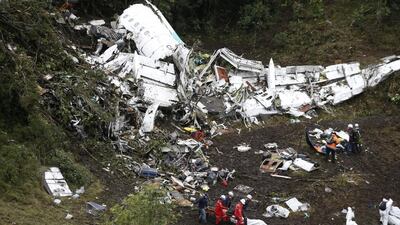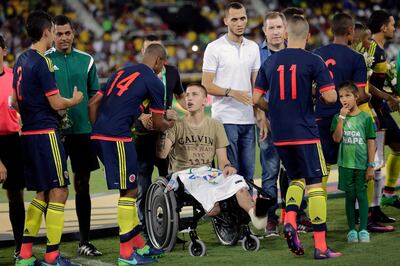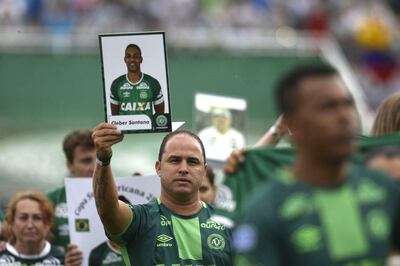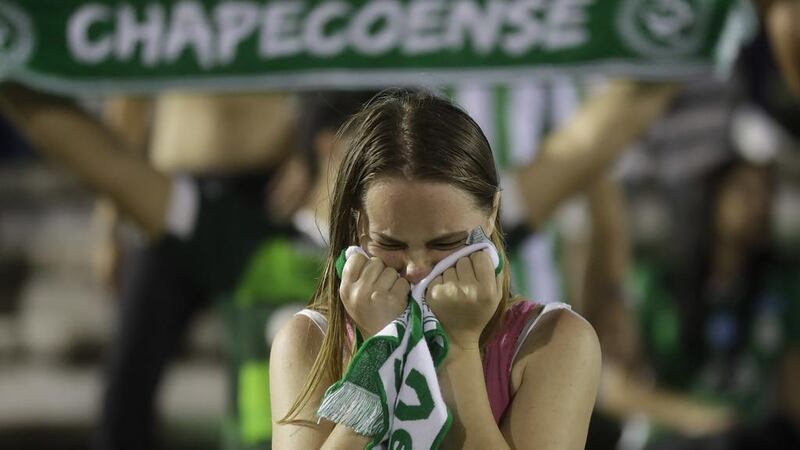Helio Zampier Neto keeps on his mobile phone a photograph of his left shin, the way it looked soon after he regained consciousness. The surgeons had worked hard with it, but the image is still of a wide, open crater. As for the scars on his face, he sees those every time he glances in the mirror. What Neto took a while to understand was that when other people stared at him, they were looking beyond the wounds.
“They see me,” Neto told me, early on in his long journey to physical rehabilitation, “and they want to touch my face. It’s because they find it hard to believe I am here, and real. I used to be just a football player. Now, I represent a miracle.”
Neto still is a football player – and that fact is its own small miracle - a tall, lean, 32-year-old central defender, who 12 months ago on Monday was heading for the most prestigious assignment of his professional career.
Neto had performed heroically, alongside his colleague, the goalkeeper Danilo, in the later stages of his club’s unprecedented progress to a major international final. His club were the unsung Brazilians, Chapecoense; their big date was in Medellin, Colombia to where they set off for the first leg of the final of the 2016 Copa Sudamericana.
___________________
Read more:
- Watch: Members of Brazilian football team killed in Colombia plane crash
- In pictures: From Liverpool to Barcelona to UAE, football world mourns Chapecoense
___________________
Neto can remember the frisson of excitement in the travelling party, within a squad of players with a strong network of friendships. None more than Neto and Danilo, who were sitting beside one another when the lights suddenly went out on the aeroplane the club had chartered from Santa Cruz, Bolivia to Colombia for the second stretch of their trip as it descended towards Medellin airport.
Danilo survived the crash, but only by a matter of hours. He died in the hospital where Neto would regain consciousness only 10 days after a teenage volunteer rescuer had found him, after the horrific collision of the plane into a hillside.
The aircraft that had been so high on hope, it soon emerged, had taken off dangerously low on fuel. Neto was one of the very last to learn, heart-breakingly, that he was one of only six passengers still alive, from the 77 people on board.

Neto the man will be forever shaped by that night. Neto the footballer has set about recovering the routines of his profession. He has been training with a re-assembled, hastily hired Chapecoense squad regularly for the past 10 months, and although the possibility of a return to action has been put back in his diary many times, as the damage to his back, his knee, and other parts of his 6ft 5in frame require further recuperation, he hopes that in 2018 his name will be read out again in a Chapecoense line-up, to a rousing cheer.
The good news, as the club and the city of Chapeco seek healing, is that "Chape", as the team are known, will be in the top division of the Brazilian national league in 2018. As Chapecoense’s first year after the tragedy comes to its end, the reconstructed squad have just ensured they will not be relegated.

It is an achievement: Chapeco, the inland city whose team had overcome the odds to conquer much of the continent in 2016, remains one of the smallest cities represented in the elite of Brazilian football. Remarkably, Alan Ruschel, one of the three players to survive the crash, has even taken part in the 2017 campaign, playing at left-back; this after sustaining injuries to his spine in the accident.
Jackson Follman, Danilo’s understudy as goalkeeper, had part of his right leg amputated, but has set his ambitions on a career as a para-athlete.

Stoicism, defiance, on the field goes only so far. Chapecoense have had an exhausting year, invited all over the world to participate in fundraising events. In their executive offices, and above all in the homes of the widows and the children left without fathers, there is ongoing anxiety about the future. Cases against the airline, LaMia, and its insurers are ongoing, the vast majority of the bereaved relatives having rejected a proposed US$200,000 (Dh735,000) settlement for each life lost. The Brazilian Players' Federation fund covers just three years salary for each player who lost his life; for the support staff who died, there is generally much less.
A Colombian government report on the causes of the accident had been due by November 29 - a year since, shortly after midnight, Brazilian time, Flight LaMia 2933 crashed outside Medellin - although their findings have been delayed.
In Chapeco, the anniversary will be observed quietly: The club’s stadium will again become a shrine, opening its gates for citizens to pay their respects, to remember the team that dreamed the incredible and suffered intolerable loss.







